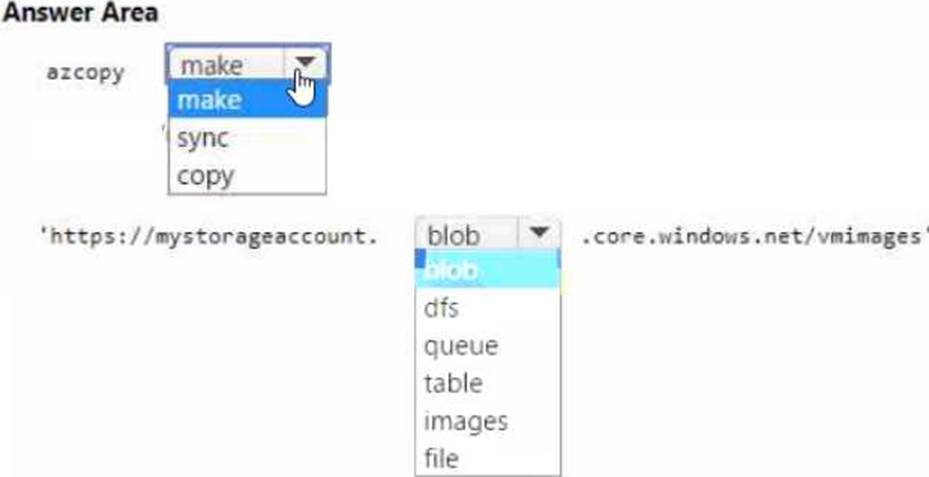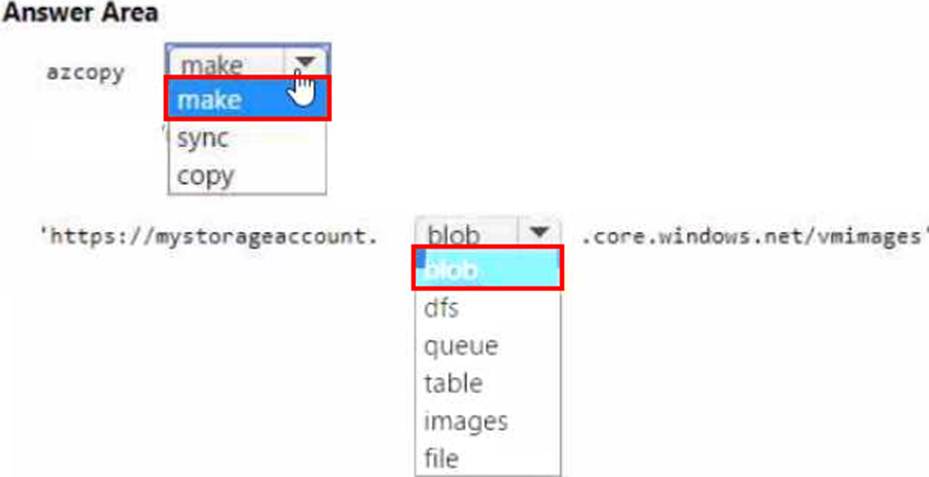Practice Free AZ-104 Exam Online Questions
HOTSPOT
You need to configure a new Azure App Service app named WebApp1.
The solution must meet the following requirements:
• WebApp1 must be able to verify a custom domain name of app.contoso.com.
• WebApp1 must be able to automatically scale up to eight instances.
• Costs and administrative effort must be minimized.
Which pricing plan should you choose, and which type of record should you use to verify the domain? To answer, select the appropriate options in the answer area. NOTE: Each correct answer is worth one point.
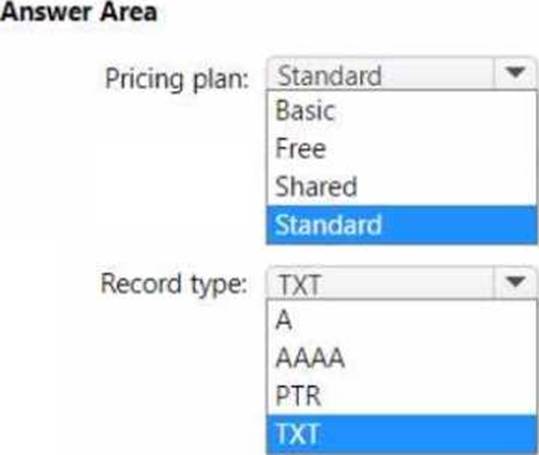
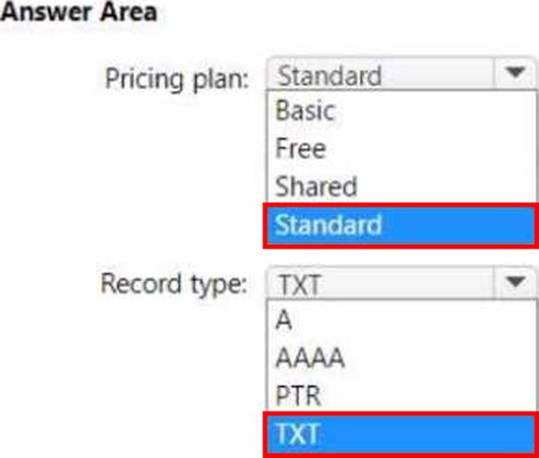
HOTSPOT
You need to meet the connection requirements for the New York office.
What should you do? To answer, select the appropriate options in the answer area. NOTE: Each correct selection is worth one point.
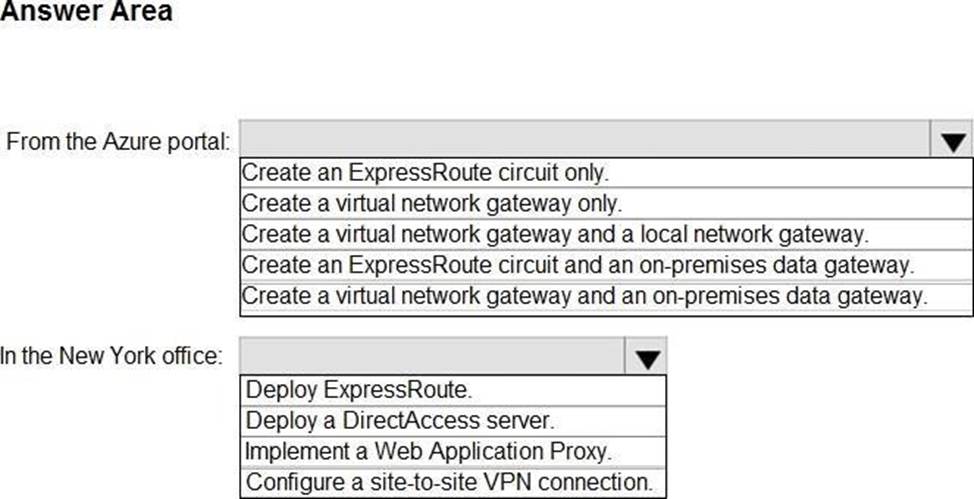
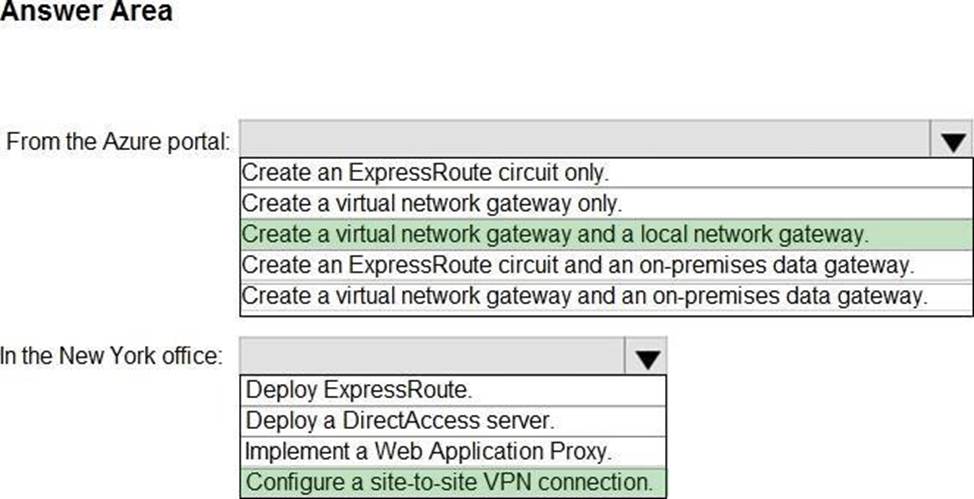
Explanation:
Box 1: Create a virtual network gateway and a local network gateway.
Azure VPN gateway. The VPN gateway service enables you to connect the VNet to the on-premises network through a VPN appliance. For more information, see Connect an on-premises network to a Microsoft Azure virtual network. The VPN gateway includes the following elements:
Virtual network gateway. A resource that provides a virtual VPN appliance for the VNet. It is responsible for routing traffic from the on-premises network to the VNet.
Local network gateway. An abstraction of the on-premises VPN appliance. Network traffic from the cloud application to the on-premises network is routed through this gateway.
Connection. The connection has properties that specify the connection type (IPSec) and the key shared with the on-premises VPN appliance to encrypt traffic.
Gateway subnet. The virtual network gateway is held in its own subnet, which is subject to various requirements, described in the Recommendations section below.
Box 2: Configure a site-to-site VPN connection
On premises create a site-to-site connection for the virtual network gateway and the local network gateway.
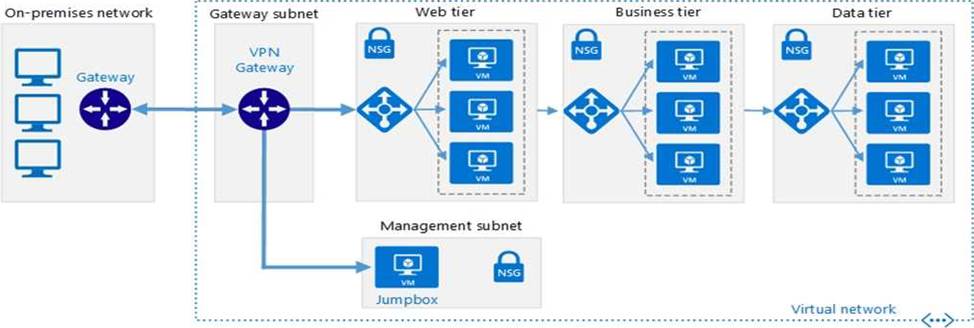
Scenario: Connect the New York office to VNet1 over the Internet by using an encrypted connection.
Incorrect Answers:
Azure ExpressRoute: Established between your network and Azure, through an ExpressRoute partner.
This connection is private. Traffic does not go over the internet.
Reference: https://docs.microsoft.com/en-us/azure/architecture/reference-architectures/hybrid-networking/vpn
HOTSPOT
You have a Microsoft Entra tenant named contoso.onmicrosoft.com that contains the users shown in the following table.

You enable password reset for contoso.onmicrosoftxom as shown in the Password Reset exhibit. (Click the Password Reset tab.)

You configure the authentication methods for password reset as shown in the Authentication Methods exhibit. (Click the Authentication Methods tab.)
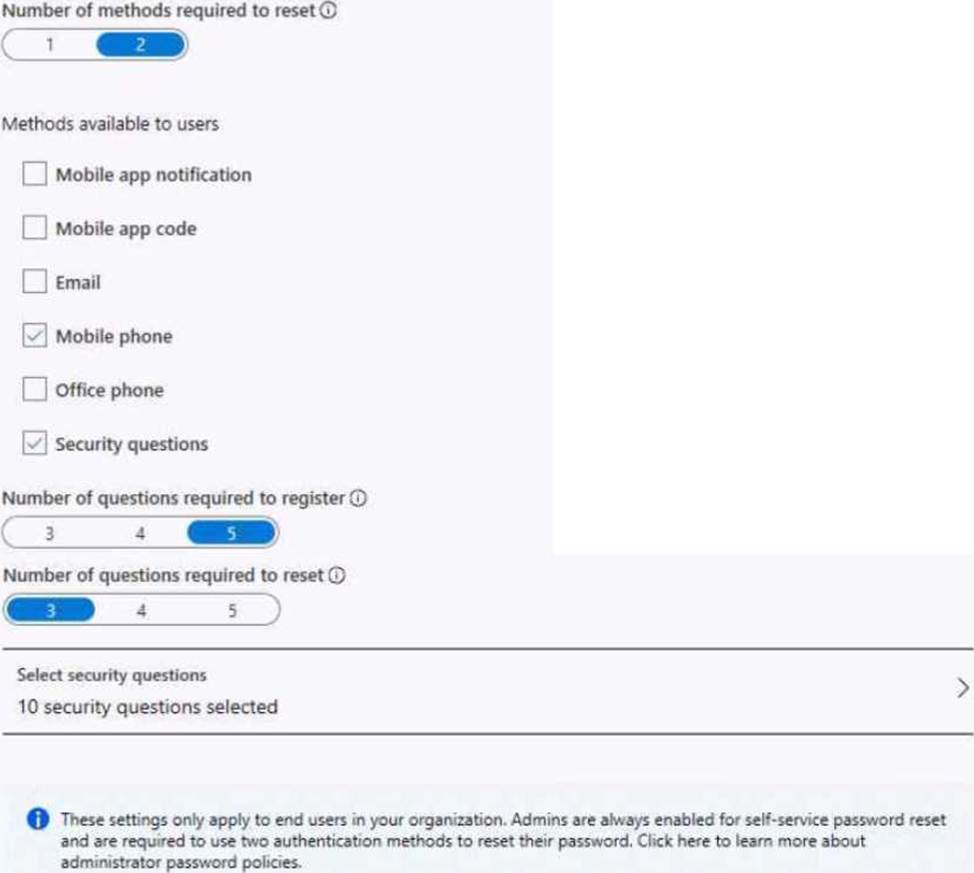
For each of the following statements, select Yes if the statement is true. Otherwise, select No. NOTE: Each correct selection is worth one point.


Note: This question is part of a series of questions that present the same scenario. Each question in the series contains a unique solution that might meet the stated goals. Some question sets might have more than one correct solution, while others might not have a correct solution.
After you answer a question in this section, you will NOT be able to return to it. As a result, these questions will not appear in the review screen.
You have an Azure container registry named Registry1 that contains an image named image1.
You receive an error message when you attempt to deploy a container instance by using image1.
You need to be able to deploy a container instance by using image1.
Solution: You set Admin user to Enable for Registry1.
Does this meet the goal?
- A . Yes
- B . No
You have an Azure Active Directory (Azure AD) tenant.
You plan to delete multiple users by using Bulk delete in the Azure Active Directory admin center.
You need to create and upload a file for the bulk delete.
Which user attributes should you include in the file?
- A . The user principal name and usage location of each user only
- B . The user principal name of each user only
- C . The display name of each user only
- D . The display name and usage location of each user only
- E . The display name and user principal name of each user only
B
Explanation:
To perform a bulk delete of users in Azure Active Directory, you need to create and upload a CSV file that contains the list of users to be deleted. The file should include the user principal name (UPN) of each user only. Therefore, the answer is B. The user principal name of each user only. When you use the bulk delete feature in the Azure Active Directory admin center, you need to specify the UPN for each user that you want to delete. The UPN is a unique identifier for each user in Azure AD and is the primary way that Azure AD identifies and manages user accounts. Including additional attributes like the display name or usage location is not required for the bulk delete operation, as the UPN is the only mandatory attribute for the user account. However, you may include additional attributes in the CSV file if you want to keep track of the metadata associated with each user account.
HOTSPOT
You have an Azure subscription named Subscription1 that contains a resource group named RG1. In RG1, you create an internal load balancer named LB1 and a public load balancer named LB2. You need to ensure that an administrator named Admin1 can manage LB1 and LB2. The solution must follow the principle of least privilege.
Which role should you assign to Admin1 for each task? To answer, select the appropriate options in the answer area. NOTE; Each correct selection is worth one point.
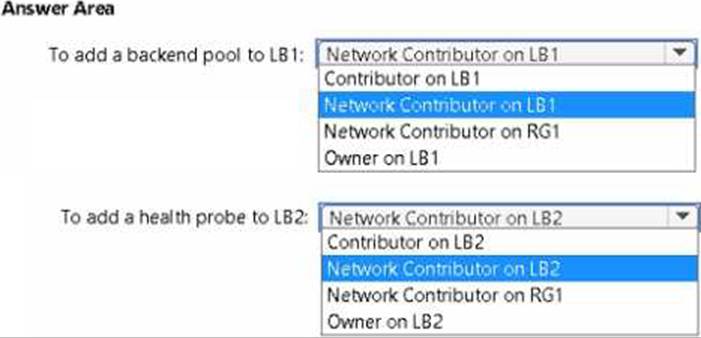

HOTSPOT
You have an Azure subscription that contains a user named User1 and a storage account named storage 1.
The storage1 account contains the resources shown in the following table.
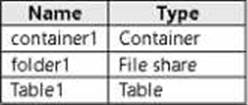
User1 is assigned the following roles for storage 1:
• Storage Blob Data Reader
• Storage Table Data Contributor
• Storage File Data SMB Share Contributor
For storage1, you create a shared access signature (SAS) named SAS1 that has the settings shown in the following exhibit. (Click the Exhibit tab.)
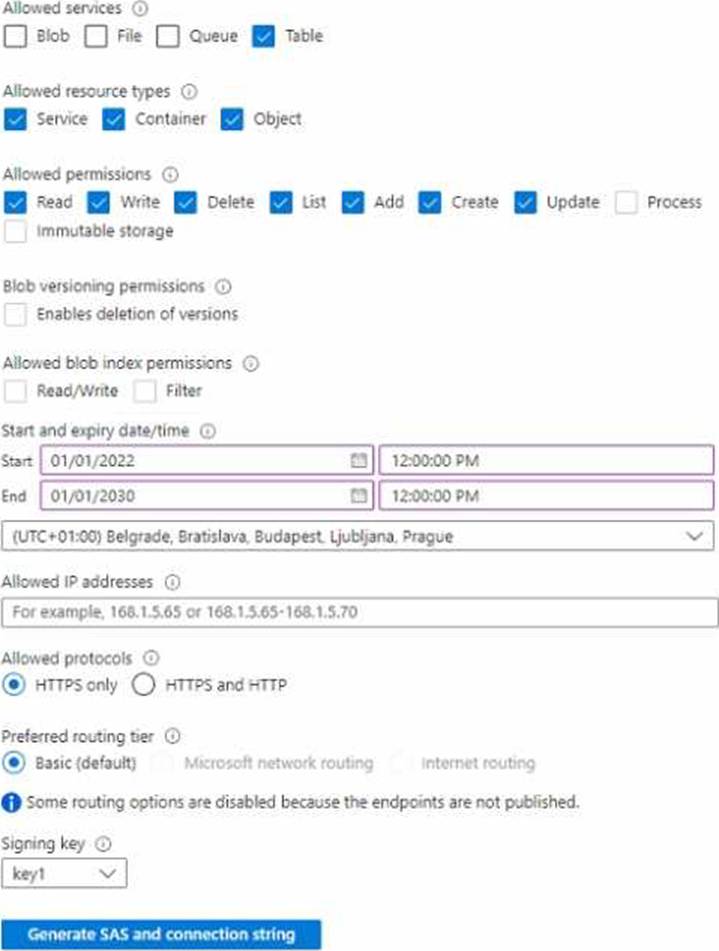
To which resources can User1 write by using SAS1 and key1? To answer, select the appropriate options in the answer area.
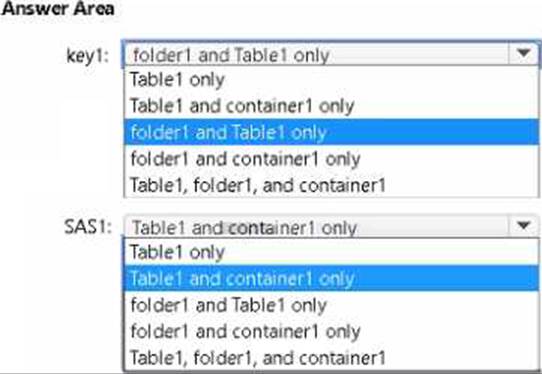
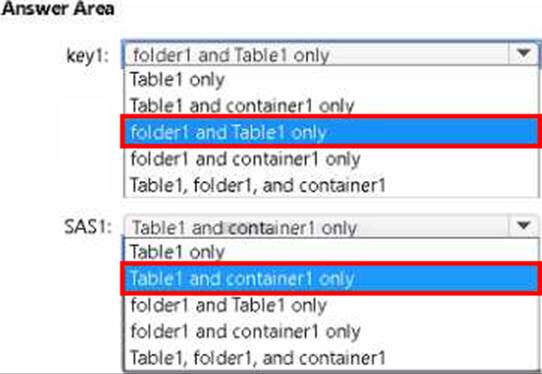
HOTSPOT
You plan to deploy five virtual machines to a virtual network subnet.
Each virtual machine will have a public IP address and a private IP address.
Each virtual machine requires the same inbound and outbound security rules.
What is the minimum number of network interfaces and network security groups that you require? To answer, select the appropriate options in the answer area. NOTE: Each correct selection is worth one point.
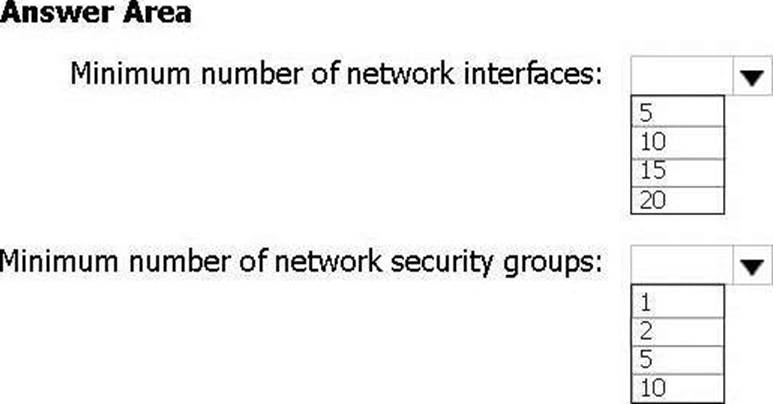
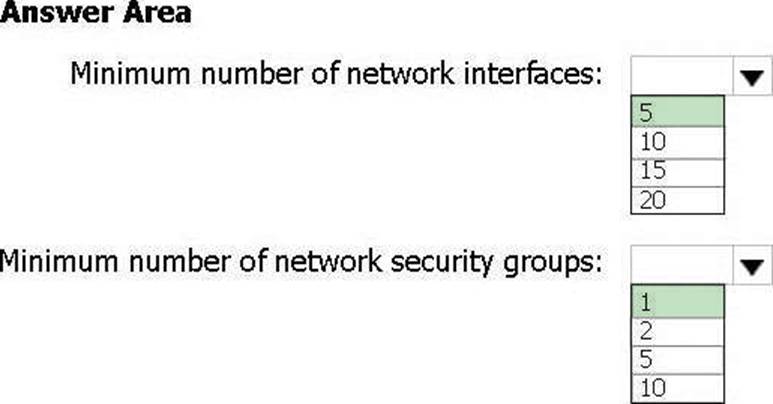
Explanation:
Box 1: 5
A public and a private IP address can be assigned to a single network interface.
Box 2: 1
You can associate zero, or one, network security group to each virtual network subnet and network interface in a virtual machine. The same network security group can be associated to as many subnets and network interfaces as you choose.
Reference: https://docs.microsoft.com/en-us/azure/virtual-network/virtual-network-network-interface-addresses
HOTSPOT
You have an Azure subscription that contains a virtual network named VNET in the East Us 2 region. A network interface named VM1-NI is connected to VNET1.
You successfully deploy the following Azure Resource Manager template.
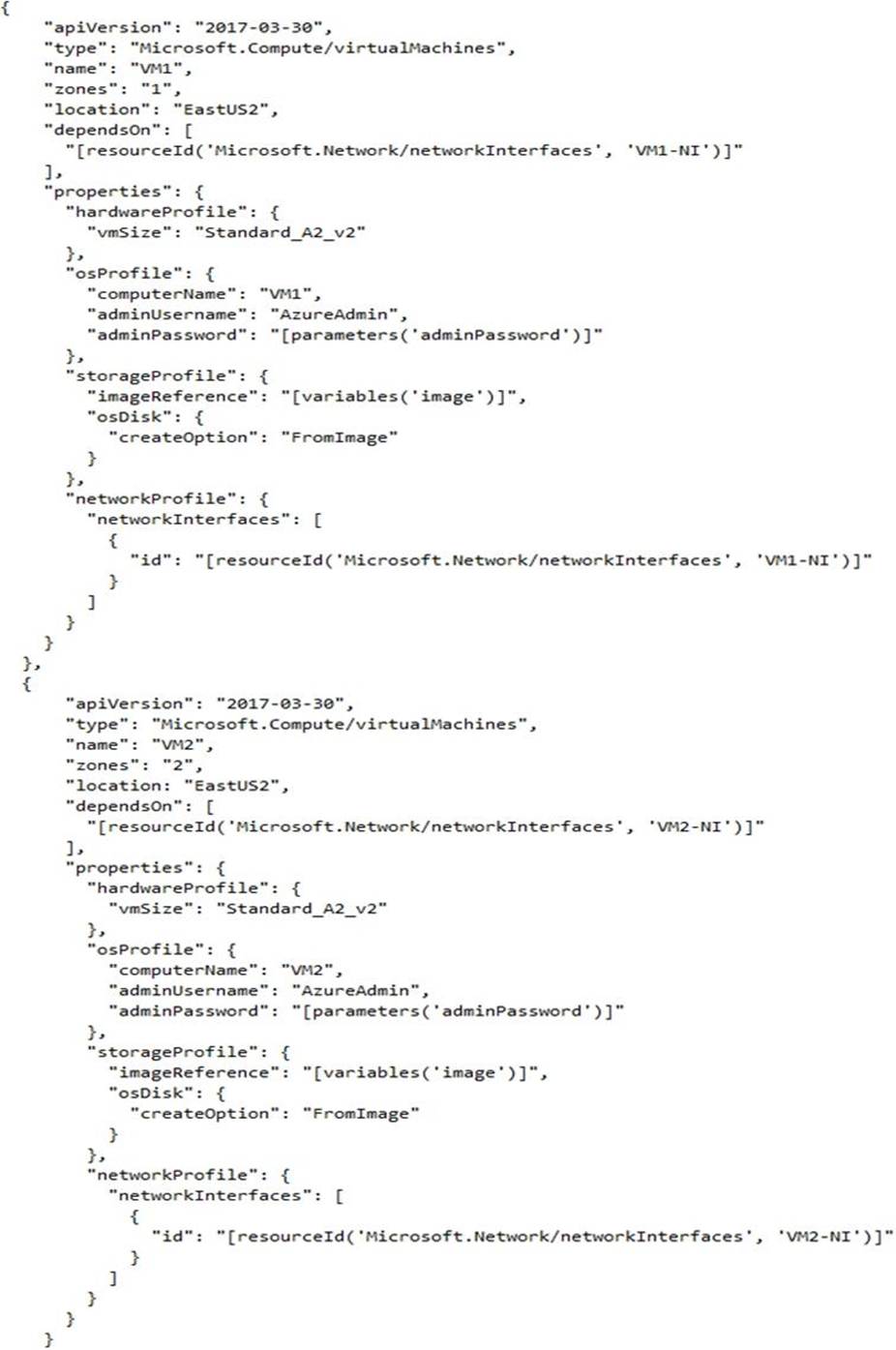
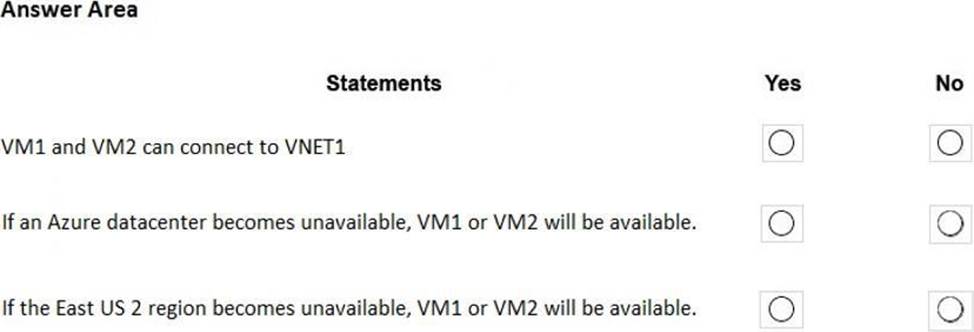

Explanation:
"A resource can only be created in a virtual network that exists in the same region and subscription as the resource." https://learn.microsoft.com/en-us/azure/virtual-network/virtual-network-vnet-plan-design-arm#regions
HOTSPOT
You have an Azure subscription that contains an Azure Storage account.
You plan to copy an on-premises virtual machine image to a container named vmimages.
You need to create the container for the planned image.
Which command should you run? To answer, select the appropriate options in the answer area. NOTE: Each correct selection is worth one point.
